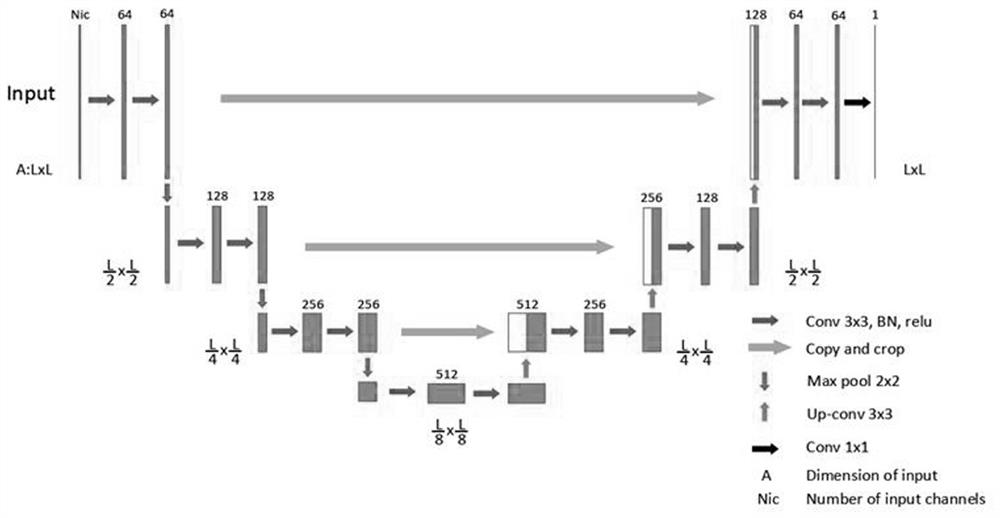Two-step phase-free imaging method for solving electromagnetic inverse scattering problem based on neural network
A neural network and inverse scattering technology, applied in the field of two-step phase-free imaging method, to achieve the effect of easy calculation
- Summary
- Abstract
- Description
- Claims
- Application Information
AI Technical Summary
Problems solved by technology
Method used
Image
Examples
Embodiment 1
[0084] This example uses experimental simulation data to validate the proposed imaging method. In the simulation, the Austrian scatterer is used as the unknown scatterer. The Austrian scatterer is a relatively complex scatterer structure, which includes two dielectric circles and a dielectric ring ( Figure 4a shown). Set the target area to be detected as a rectangular domain of interest of 2λ×2λ, and the background is air. The Austrian scatterer is placed inside it, and the radii of the two medium circles are both 0.2λ, and their centers are located at (-0.3λ, 0.6λ) and (0.3λ, 0.6λ) respectively. The inner diameter of the medium ring is 0.3λ, the outer diameter is 0.6λ, and its center is located at (0λ, 0.2λ). The inversion result of this example is as follows Figure 4b As shown in , it can be seen that the inversion result is quite good, indicating that the test of this example is very successful.
Embodiment 2
[0086]Although the results verified by simulation data are good, in order to consider the actual situation, it is necessary to verify the measured data. The so-called actual measurement data is the scattered field measured by the instrument, rather than obtained by computer simulation. The Institute Fresnel laboratory has spent a lot of energy and rigorous experimental environment to measure the measured data, and can directly use their data for verification. Such as Figure 5a As shown, the scatterer used in this laboratory is FoamDielExt, which consists of two dielectric circles, a small dielectric circle with a diameter of 8cm and a dielectric constant of 1.45, and a small dielectric circle with a diameter of 3.1cm and a dielectric constant of 3.0 Large medium circle. Data for FoamDielExt in the TM case was collected using 8 incident antennas, 241 receiving antennas and 9 frequencies (2-10 GHz) in a 20 cm x 20 cm domain of interest. All numerical experiments were carried...
PUM
 Login to View More
Login to View More Abstract
Description
Claims
Application Information
 Login to View More
Login to View More - R&D
- Intellectual Property
- Life Sciences
- Materials
- Tech Scout
- Unparalleled Data Quality
- Higher Quality Content
- 60% Fewer Hallucinations
Browse by: Latest US Patents, China's latest patents, Technical Efficacy Thesaurus, Application Domain, Technology Topic, Popular Technical Reports.
© 2025 PatSnap. All rights reserved.Legal|Privacy policy|Modern Slavery Act Transparency Statement|Sitemap|About US| Contact US: help@patsnap.com



